Microsoft Edge browser now includes the Password Monitor feature. This feature automatically checks your saved passwords in Edge across a cloud database of leaked passwords and alerts you in case of any leak.
Also, to scan your saved passwords, Edge uses Homomorphic Encryption. What this simply means is it doesn’t know what your passwords are and can’t access them but it can still check if they were involved in a breach.
Edge browser version 85 and above supports this feature. You’d also need to be signed in. Check the Edge version and update it to the latest one if not by typing in the address bar:
![]()
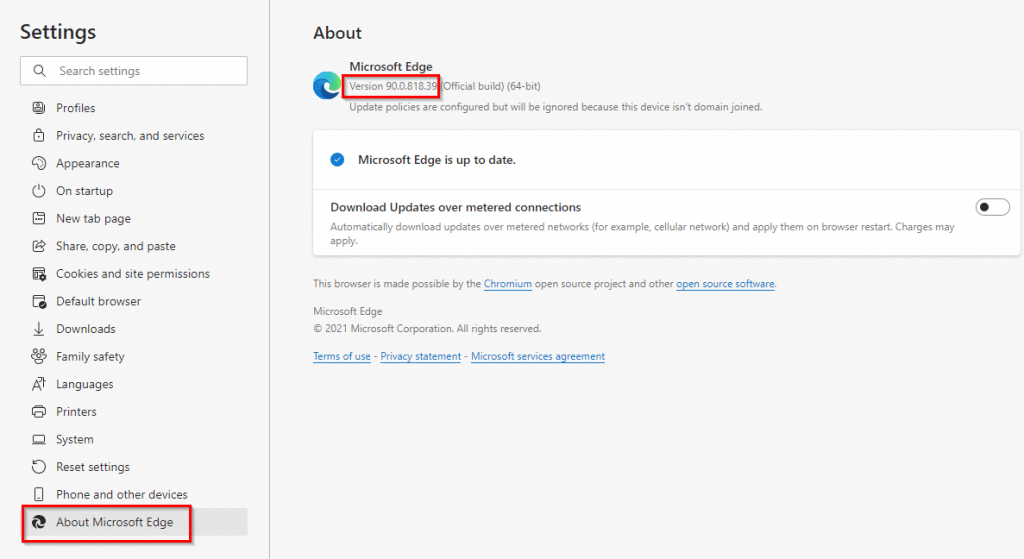
Once updated, on the first run, the Password Monitor notification will be displayed.
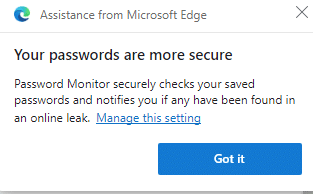
Access the Edge password settings by typing in the address bar:
![]()
Here, enable the option of Show alerts when passwords are found in an online leak. This can enable or disable Password Monitor as needed.
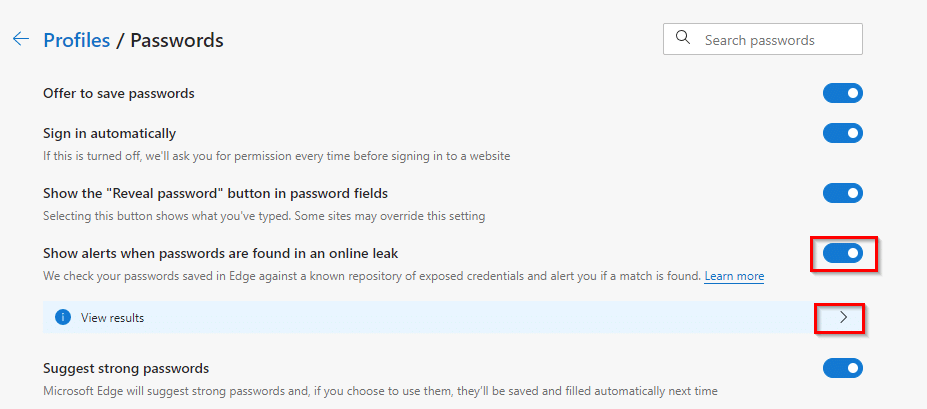
To see if any breach is detected, click on View results.
Manual scan using Password Monitor:
To access the Password Monitor directly through the address bar, type in:
![]()
Here you can also manually check using the Scan now button. On choosing this, Password Monitor will immediately check the saved passwords for an online breach.
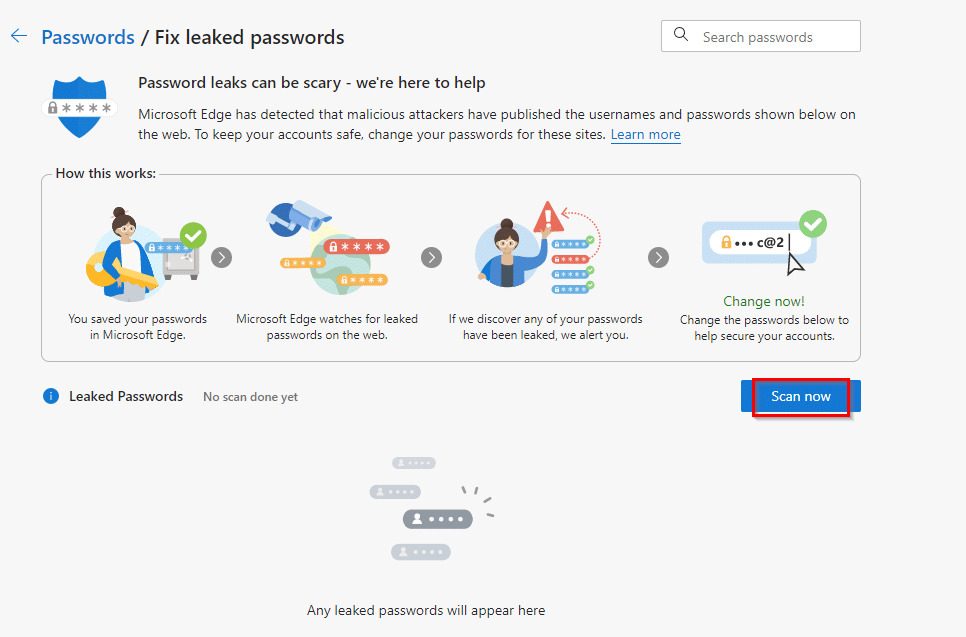
You may have to repeat it a few times if the scan fails to complete. Otherwise, Edge will anyway use Password Monitor at regular intervals.
For detected leaked passwords, Password Monitor will show them with their associated website URLs and the login credentials.
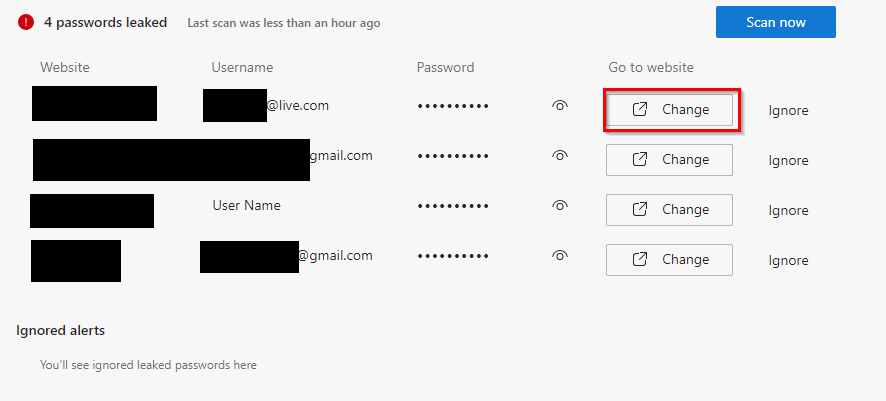
This will be displayed as a warning too in the Edge menu bar.

You can then either change them immediately by clicking on the Change button or add the website to the exclusion list through Ignore. (This option can be used if the website no longer exists or you have already closed or deleted that account.)
So, Password Monitor is a useful Edge feature that proactively helps you protect against such breaches and thereby making web browsing a lot safer.

All done.